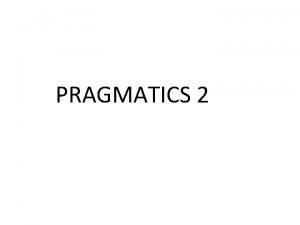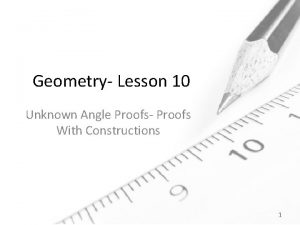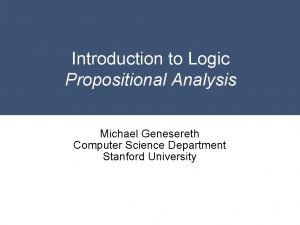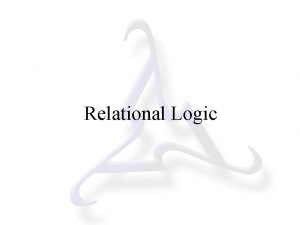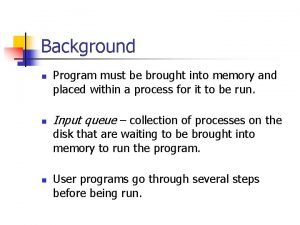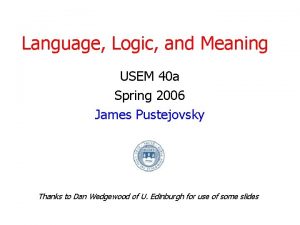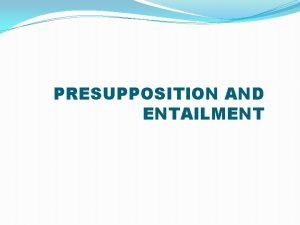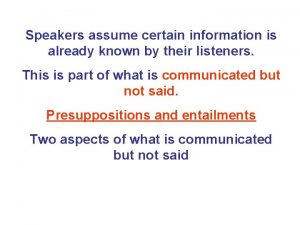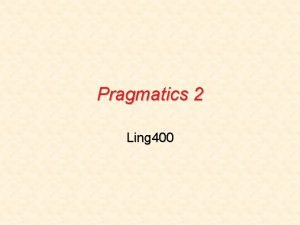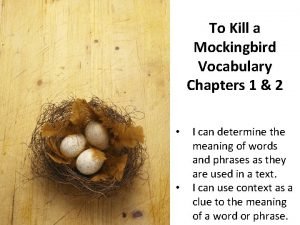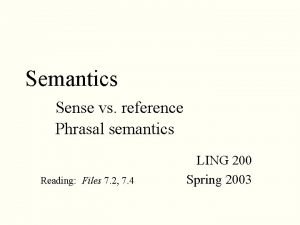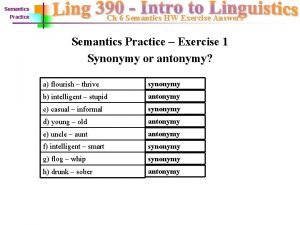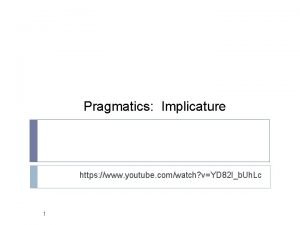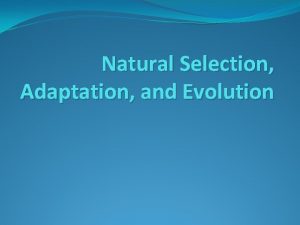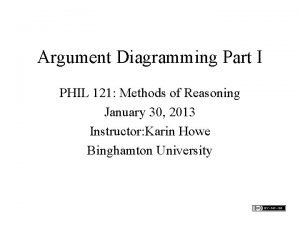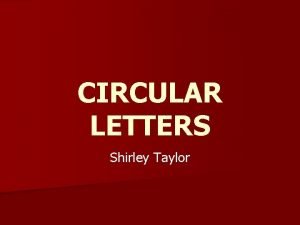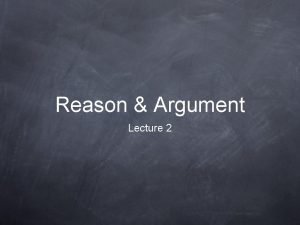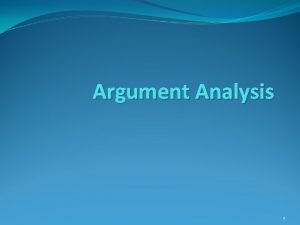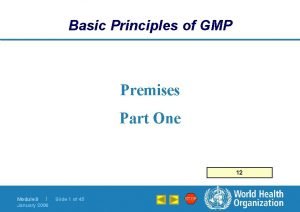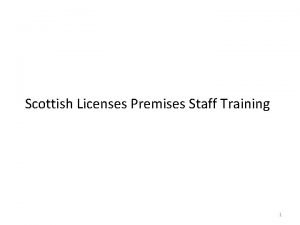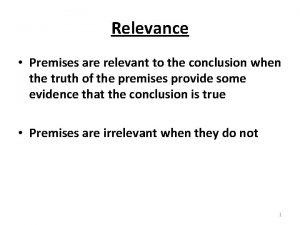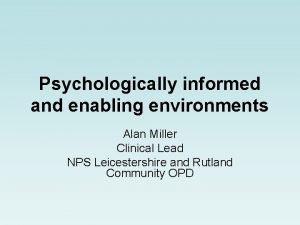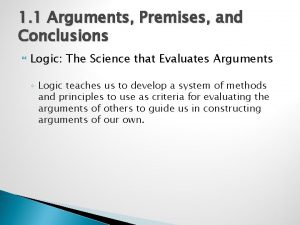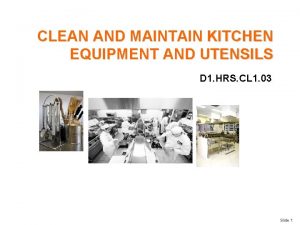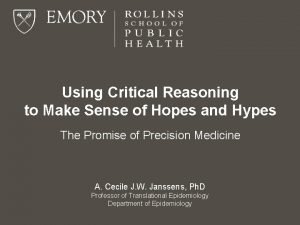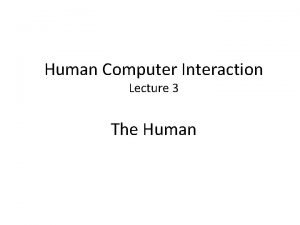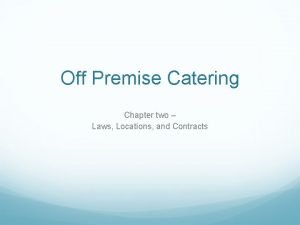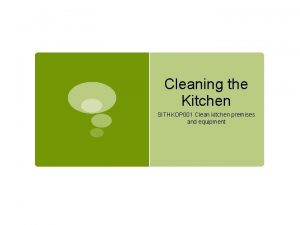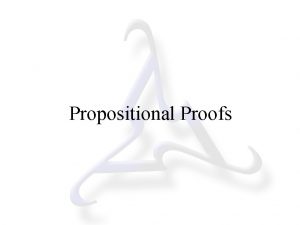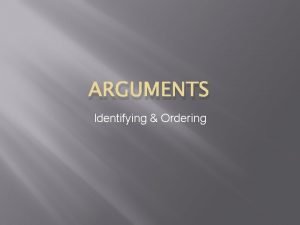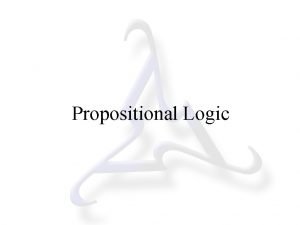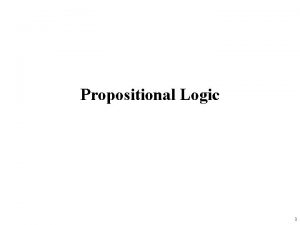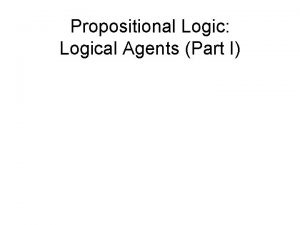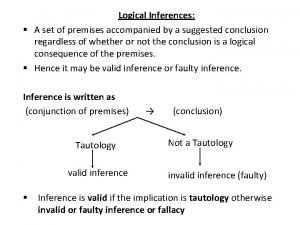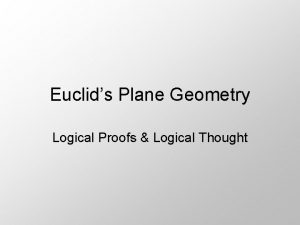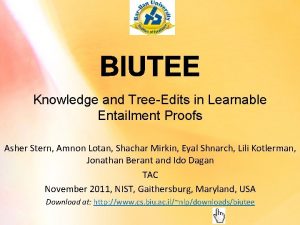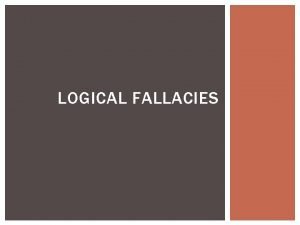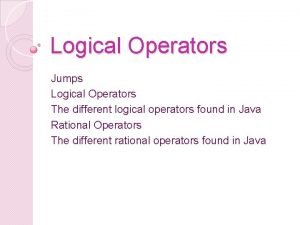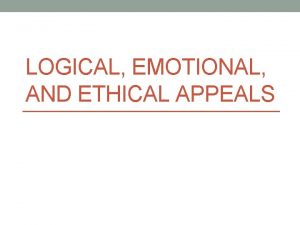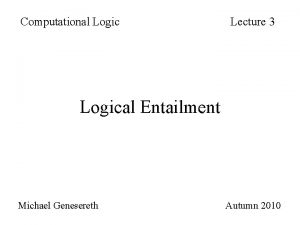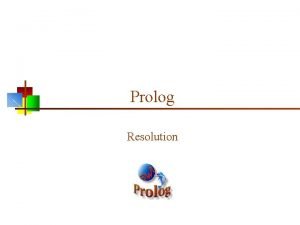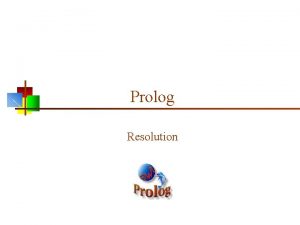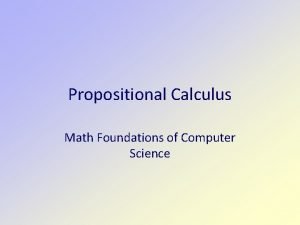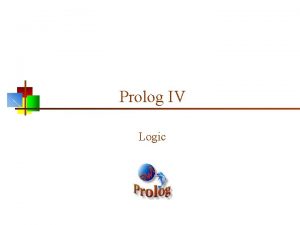Propositional Proofs Logical Entailment A set of premises







































- Slides: 39

Propositional Proofs

Logical Entailment A set of premises Δ logically entails a conclusion ϕ (Δ |= ϕ) if and only if every interpretation that satisfies Δ also satisfies ϕ.

Truth Table Method Premises Conclusion m p q T T T × × × T F T × × × F T F F T F F F With n constants, there are 2 n truth assignments.

Proofs: Symbolic manipulation of sentences rather than enumeration of truth assignments. Benefits: Proofs are usually smaller than truth tables. Proofs can often be found with less work.

Linear Proofs

Schemas / Schemata A schema is an expression satisfying the grammatical rules of our language except for the occurrence of metavariables (written here as Greek letters) in place of various subparts of the expression. For example, the following expression is a schema with metavariables φ and ψ. φ ⇒ (ψ ⇒ φ)

Rules of Inference A rule of inference is a pattern of reasoning consisting of some schemas, called premises, and one or more additional schemas, called conclusions. φ⇒ψ φ ψ This rule is Implication Elimination or Modus Ponens.

Implication Creation ψ φ⇒ψ


Rule Instances An instance of a rule of inference is the rule obtained by consistently substituting sentences for the metavariables in the rule. For example, the following is an instance of Implication Elimination. φ⇒ψ φ ψ p⇒q p q (p ⇒ q) ⇒ (q ⇒ r) p⇒q q⇒r

Rule Application Premises: (p ⇒q) ⇒ q(⇒r) Rule of Inference: φ⇒ψ φ ψ Conclusion: (q ⇒r) (p ⇒ q) ⇒ (q ⇒ r) (p ⇒ q) (q ⇒ r)

Top Level Sentences Only!!! Premises: (p ⇒q) (p ⇒r) Rule of Inference: φ⇒ψ φ ψ Conclusion: X (q ⇒r) X No, no! (p ⇒ q) p q

Proof A linear proof of a conclusion from a set of premises is a sequence of sentences terminating in the conclusion in which each item is either (1) a premise, (2) an instance of an axiom schema, or (3) the result of applying a rule of inference to earlier items in sequence.

Example Given p and (p ⇒q) and ((p ⇒q) ⇒ q(⇒r)), prove r. 1. 2. 3. 4. 5. 6 p p ⇒q (p ⇒q) ⇒ q(⇒r) q q ⇒r r Premise IE: 1, 2 IE: 2, 3 IE: 4, 5

Example Given (p ⇒q) and (q ⇒r), prove (p ⇒r). 1. p ⇒q Premise 2. q ⇒r Premise 4. p ⇒(q ⇒r) IC: 2 5. (p ⇒q) ⇒ p(⇒r) ID: 4 6 (p ⇒r) IE: 4, 5

Provability If there exists a proof of a sentence φ from a set Δ of premises using the rules of inference in R, we say that φ is provable from Δ using R. We usually write this as Δ ⊢R φ, using the provability operator ⊢ (which is sometimes called single turnstile). (If the set of rules is clear from context, we usually drop the subscript, writing just Δ ⊢ φ. ) {p ⇒q, q ⇒r} ⊢ (p ⇒q)

Hypothetical Reasoning

Structured Proofs

Operations on Structured Proofs Making Assumptions Applying Ordinary Rules of Inference Discharging Assumptions using Structured Rules of Inference

Making Assumptions In a hypothetical proof, it is permissible to make an arbitrary assumption or hypothetical in a nested proof. The assumption need not be in the original premise set. Such assumptions can be used within the nested proof. However, they may not be used outside of the subproof in which they appear.

Example

Ordinary Rules of Inference An ordinary rule of inference applies to a proof at any level of nesting if and only there is an instance of the rule in which all of the premises occur earlier in the nested proof or in some “superproof” of the nested proof. Importantly, it is not permissible to apply an ordinary rule of inference to premises in subproofs of a nested proof or in other subproofs of a superproof of a nested proof.

Example

Bad Proof X X

Bad Proof X X

Structured Rules of Inference A structured rule of inference is a pattern of reasoning consisting of one or more schemas, called premises, and one or more additional schemas, called conclusions, in which one of the premises is a condition of the form φ ⊢ ψ. φ⊢ψ φ⇒ψ This schema is called Implication Introduction.

Structured Rule Application A structured rule of inference applies to a nested proof if and only there is an instance of the rule in which all of the premises are satisfied. A premise that is an ordinary schema is satisfied if and only if it occurs earlier in the nested proof or in any “superproof” of that nested subproof. A premise of the form φ ⊢ ψ is satisfied if and only if the nested proof has φ as an assumption and terminates in ψ.

Structured Proof A structured proof of a conclusion from a set of premises is a sequence of (possibly nested) sentences terminating in an occurrence of the conclusion at the top level of the proof. Each step in the proof must be either (1) a premise (at the top level), (2) an assumption, or (3) the result of applying an ordinary or structured rule of inference to earlier items in the sequence (subject to the constraints given above).

Fitch

Negations Negation Introduction (NI): φ⇒χ φ ⇒ ¬χ ¬φ Negation Elimination (NE): ¬¬φ φ

Conjunctions And Introduction (AI): φ ψ φ ∧ψ And Elimination (AE): φ ∧ψ φ ψ

Disjunctions Or Introduction (BI): φ φ ∨ψ Or Elimination (BE): φ ∨ψ φ⇒χ ψ⇒χ χ

Implications And Introduction (AI): φ⊢ψ φ⇒ψ Implications Elimination (AE): φ⇒ψ φ ψ

Equivalences / Biconditionals Biconditional Introduction (BI): φ⇒ψ ψ⇒φ φ ⇔ψ Biconditional Elimination (BE): φ ⇔ψ φ⇒ψ ψ⇒φ

Soundness and Completeness

Logical Entailment and Provability Completeness A set of premises Δ logically entails a conclusion ϕ (Δ |= ϕ) if and only if every interpretation that satisfies Δ also satisfies ϕ. If there exists a proof of a sentence φ from a set Δ of premises using the rules of inference in R, we say that φ is provable from Δ using R (written Δ ⊢R φ).

Soundness and Completeness A proof system is sound if and only if every provable conclusion is logically entailed. If Δ ⊢ φ, then Δ ⊨ φ. A proof system is complete if and only if every logical conclusion is provable. If Δ ⊨ φ, then Δ ⊢ φ.

Fitch Theorem: Fitch is sound and complete for Propositional Logic. Δ |= ϕ if and only if Δ ⊢Fitch φ. Upshot: The truth table method and the proof method succeed in exactly the same cases!

 Ordered entailment
Ordered entailment Unknown angle proofs-proofs with constructions
Unknown angle proofs-proofs with constructions Lesson 9 unknown angle proofs
Lesson 9 unknown angle proofs Consistency logic
Consistency logic Prop logic
Prop logic Total set awareness set consideration set
Total set awareness set consideration set Training set validation set test set
Training set validation set test set Hukum kesetaraan logis
Hukum kesetaraan logis Logical form examples
Logical form examples Dog set d of the logical address must be
Dog set d of the logical address must be Linguistic meaning
Linguistic meaning Entailment and presupposition examples
Entailment and presupposition examples Entailment
Entailment Implicature
Implicature Entailment observasi
Entailment observasi To kill a mockingbird vocabulary chapter 1
To kill a mockingbird vocabulary chapter 1 What are entailments
What are entailments Semantic 60 answer
Semantic 60 answer What are entailments
What are entailments Youtube
Youtube 4 premises of natural selection
4 premises of natural selection Azure dsc linux
Azure dsc linux Explicit claim example
Explicit claim example Fiber to the premises
Fiber to the premises Explicit premises
Explicit premises Circular letter with tear off slip examples
Circular letter with tear off slip examples Explicit premises
Explicit premises Extended argument
Extended argument Virtualized customer premises equipment
Virtualized customer premises equipment Gmp premises
Gmp premises Licensed premises staff training
Licensed premises staff training Relevant premises
Relevant premises Kirk lodge approved premises
Kirk lodge approved premises Conjoint premises
Conjoint premises Cleaning and maintaining kitchen premises
Cleaning and maintaining kitchen premises Argument of definition
Argument of definition Information reproduced from memory can be assisted by cues.
Information reproduced from memory can be assisted by cues. Click2clone
Click2clone Legal aspects of catering premises
Legal aspects of catering premises Cleaning kitchen premises
Cleaning kitchen premises
